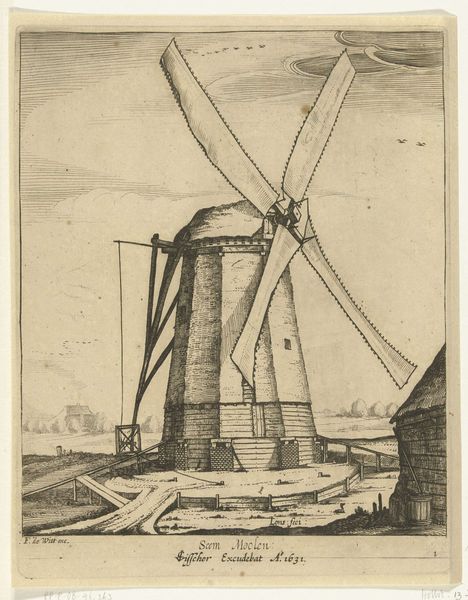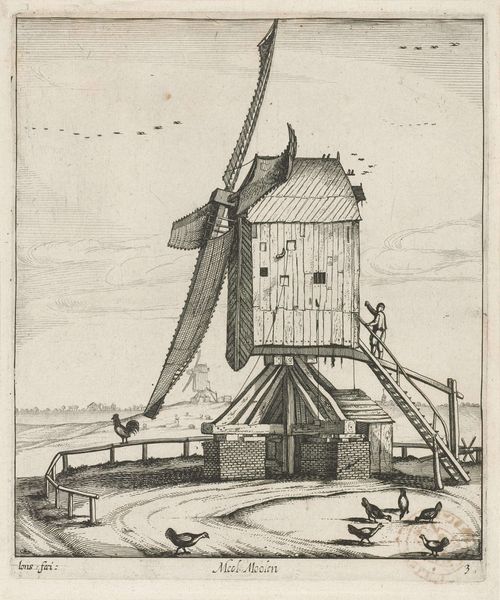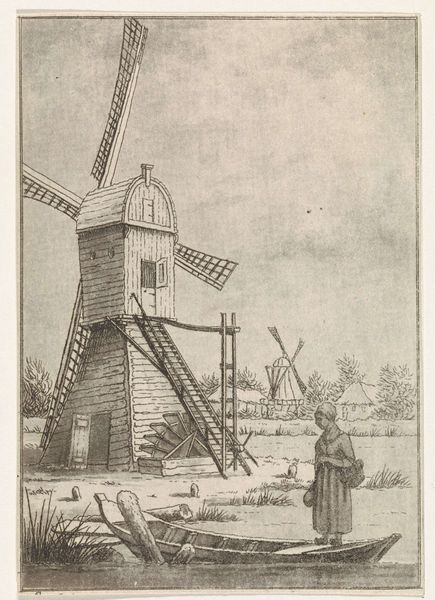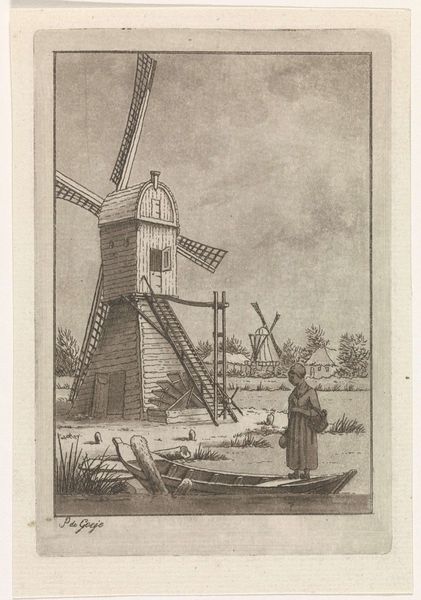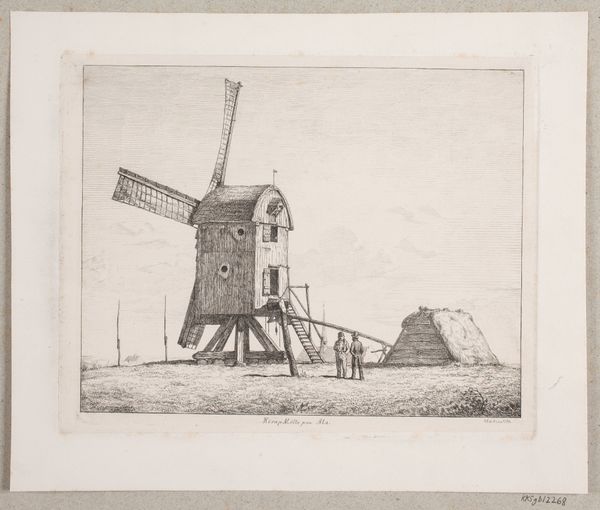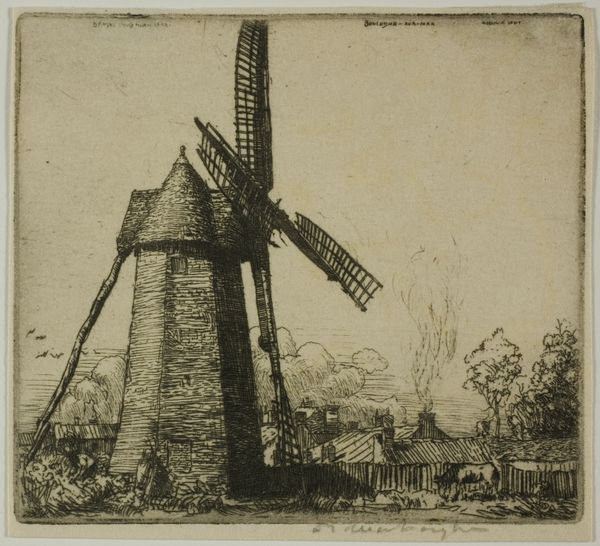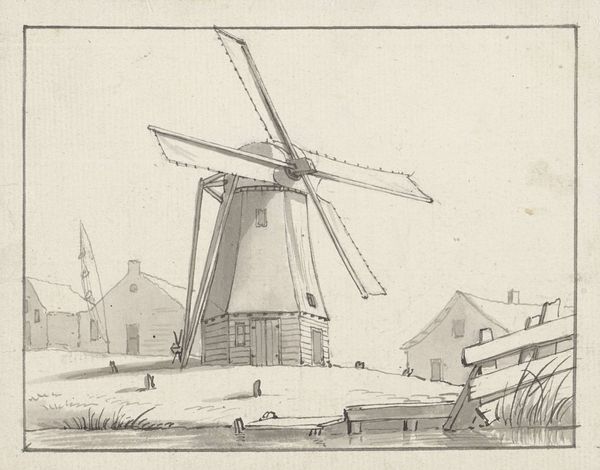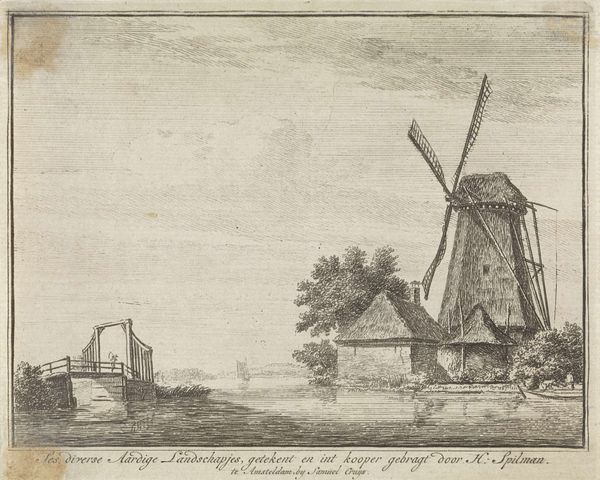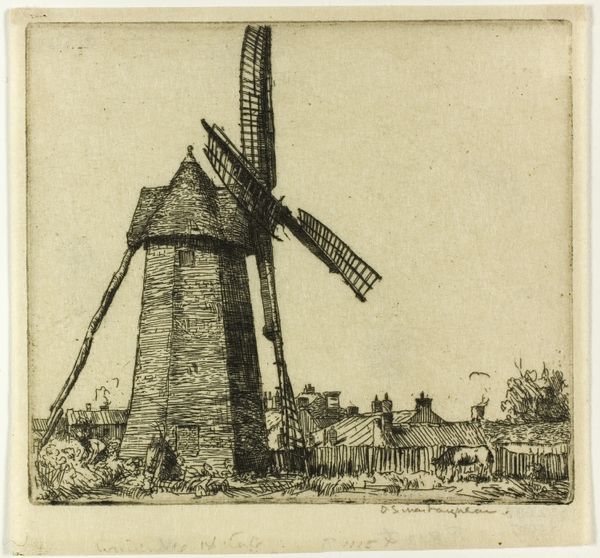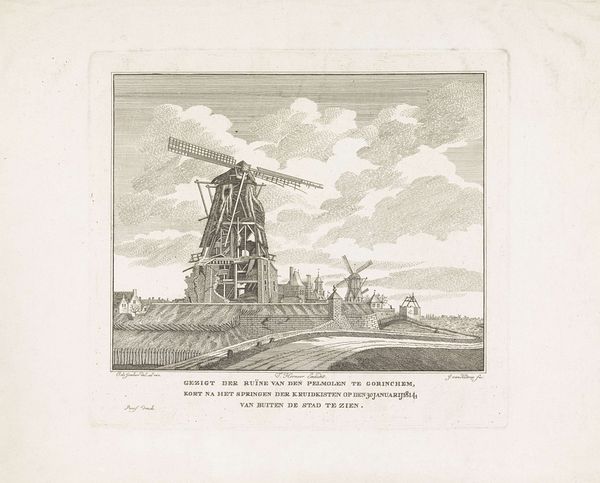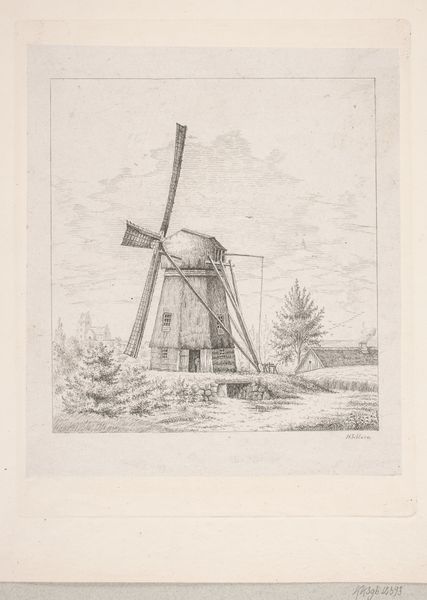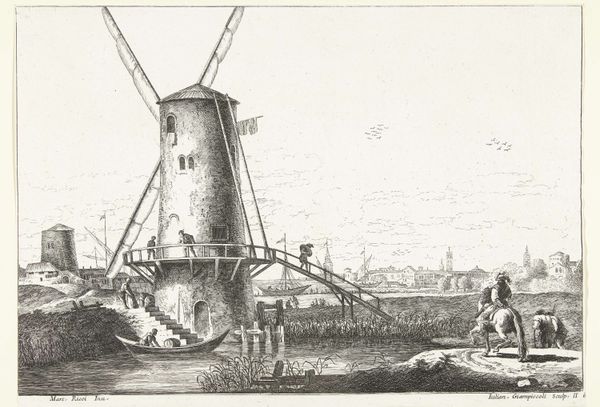
print, etching
#
dutch-golden-age
# print
#
etching
#
landscape
#
cityscape
Dimensions: height 200 mm, width 168 mm
Copyright: Rijks Museum: Open Domain
This is Dirk Eversen Lons's etching "Meelmolen," made around 1625. The windmill, of course, dominates, and its sails evoke the ancient symbol of the wheel, a motif found in diverse cultures, representing cyclical time and cosmic order. The wheel speaks of constant motion and change, much like the cyclical nature of life itself. It's not unlike the Buddhist Dharma wheel, symbolizing the continuous cycle of teachings, or even the solar wheels found in ancient Nordic petroglyphs. Here, the windmill serves a practical purpose, grinding grain, yet it also taps into a deeper, archetypal symbolism. Consider how our subconscious recognizes these patterns—the turning of the sails, an echo of primal symbols that stir within us, reminding us of the continuous, unending flow of existence. These motifs, passed down through generations, link us to a shared past. And so, the windmill is not just a machine but a vessel carrying the weight of cultural memory, a testament to the enduring power of visual symbols.
Comments
No comments
Be the first to comment and join the conversation on the ultimate creative platform.

